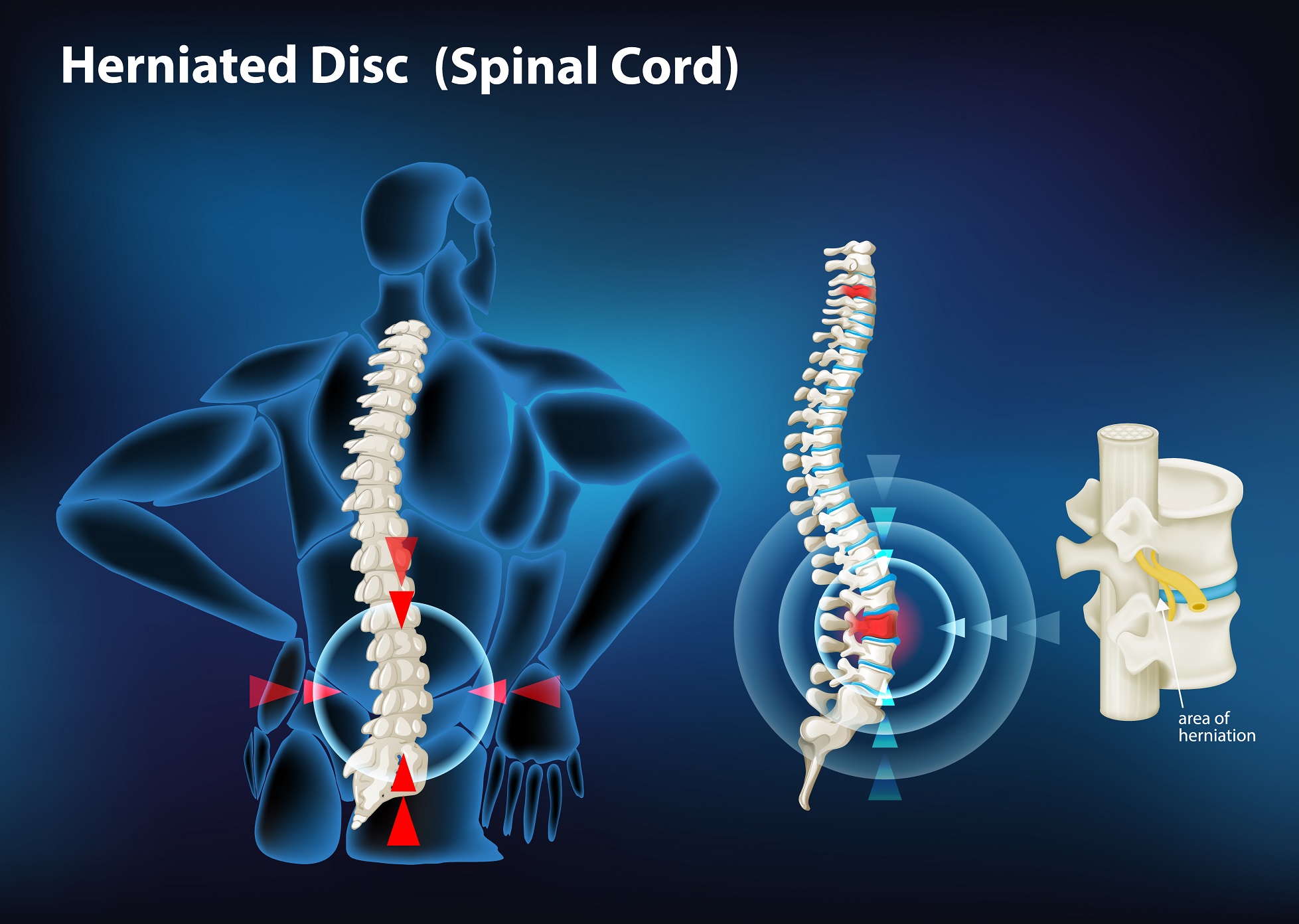What is a herniated disc?
Each of your intervertebral discs is comprised of two parts. The tough exterior, or the annulus fibrosus, gives the rubbery cushion a complete range of motion. The disc’s spongy interior, or its nucleus pulposus, helps it function as an effective shock absorber.
When a disc’s interior fibers tear, the soft material begins to move toward the outside of the disc, where it pushes up against the exterior wall and makes it protrude, or bulge. With enough pressure, a bulging disc can herniate, or rupture, allowing its soft interior to spill out onto nearby structures, including nerves.
Where does my pain come from?
Herniated discs usually occur in the lumbar spine (lower back) or the cervical spine (neck). Although physicians once believed the disc itself didn’t contain pain receptors, extensive research shows that discs have a profusion of nerve endings. This is why a spinal disc that sustains direct trauma can cause excruciating pain.
The most common source of pain caused by disc herniation happens when the interior material touches, crowds, or pushes on nearby spinal nerves. A herniated disc in your lower back can lead to pain sensations in your buttocks and leg, while a herniated disc in your neck may result in pain that radiates into your shoulder or arm.
How are herniated discs treated?
To properly diagnose a herniated disc and pinpoint the exact source of your pain, Dr. Kim must first perform a thorough examination and evaluation, which may include diagnostic imaging tests such as a CT scan.
Initially, managing pain caused by herniated spinal discs often includes epidural injections into or near the spine. Dr. Kim typically performs these injections — which may contain steroids, pain relievers, or mild anesthetics — with the aid of X-ray technology. In addition to helping ensure proper alignment and position within the spine, X-ray guided injections are much more likely to go where they’re most needed.
Once inflammation is reduced and your pain has subsided, an individualized physical therapy program can provide long-term pain relief by helping you build your strength and improve your range of motion.
This content comes from: Source





